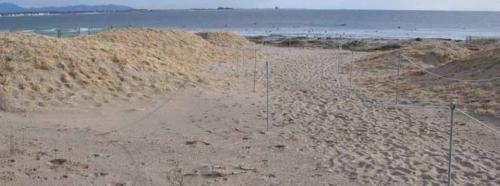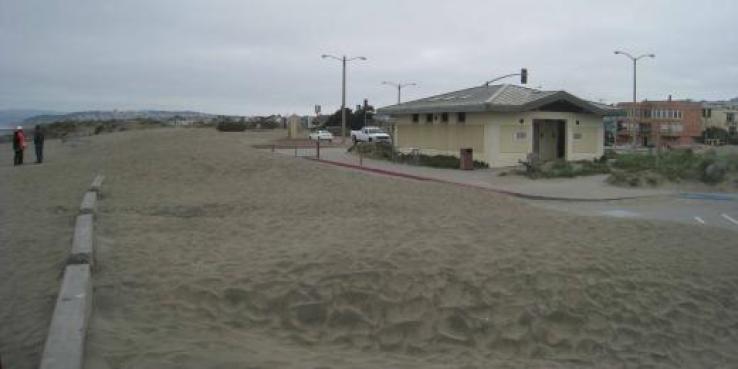The Problem
The placement of 73,000 cubic yards of sand by SFPUC and the GGNRA -- a softer approach to coastal protection that SPUR supports -- has resulted in a significant unintended consequence: windblown sand that has closed the parking lot, restroom, and Great Highway at Sloat Boulevard. Large amounts of sand (where once there was next to none) combined with its relatively fine grain size, the ramp-like shape of the embankment that was created and especially heavy offshore Spring winds, have resulted in drifts forming higher than the concrete barriers at the parking lot's edge, creating a headache for city crews, who are struggling to keep up.
The Benefits
At the same time, the sand has provided a lot of benefits. It has allowed an additional measure of protection, helping to stave the placement of any additional hard structures. According to coastal engineers working in the area, it has also been moved alongshore, raising the level (and thus the width) of the sandy beach for some distance beyond the placement area. A casual observer can see that the project drastically improved aesthetics and pedestrian access to the beach, covering the exposed fill and rubble as well as portions of the nearby sandbags and revetments.
Why it Matters
Resolving the windblown sand problem is especially important for the future of coastal management at Ocean Beach. Beach nourishment (or the placement of sand) is envisioned as a major tool for tackling erosion, both through a repeat of last year's "backpass" by truck from the north end of the beach, and, longer-term, through the placement of sand dredged from the Golden Gate Marine Shipping Channel by the US Army Corps of Engineers. If the side effect of sand placement is havoc on the landside, the ability to use this tool will be compromised.
The Good News: Mitigation Techniques
The news is that there are many measures that can reduce the incidence of windblown sand. SPUR is working with our partner agencies and coastal consultants to develop and test some best practices going forward. First, the sand embankment can be reshaped to act as less of a launching ramp. Sand fencing can also be placed to interrupt blowing sand. Simple string fencing or driftwood can guide visitors to the best access points, limiting surface impacts. Straw made from dried beach grass can be 'punched' into the sand, introducing a rougher surface that inhibits blowouts.

Punched straw and string fencing at Surfer's Point in Ventura, January 2013. Image courtesy Bob Battalio, ESA PWA.
What to Expect
Look for city crews to be removing sand in the coming weeks, followed by a pilot project testing some of these windblown sand management techniques.
